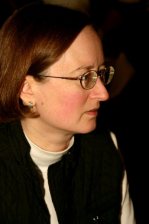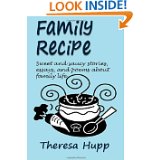Author’s Blog Chain
My friend Lisa Daly has tagged me to follow her in the author blog chain. I’m very excited about the publication of her first novel, Mystery, Ink: A Novel Way to Die. You can find more information about it on Lisa’s website: http://www.lisakaydaly.com.
Here are my answers to four basic questions about my work.
1. What are you currently working on?
Right now I’m about a quarter of the way through the first complete draft of Wings, a Cinderella, P. I. Novel. (I’ve already written parts of it.) It’s the second of two novels about Cinderella, twenty years, three kids and a few extra pounds after the ball. In the first she’s been convicted of a heinous crime she didn’t commit and exiled far to the north of the Kingdom of AzureSky. And she has to escape the walls that confine her. In Wings she flies home on Mother Goose to save her loved ones and to set the Kingdom straight after a villain and his minions have severely messed it up.
2. How does your work differ from others?
Typically, stories about Cinderella are for the young. Mine are for grown-ups, though they often contain some of the whimsy, charm and humor that people of all ages like in fairy tales. Though firmly in the fantasy realm, the Cinderella, P. I. novels and stories have a contemporary edge and are also mysteries.
Besides the Cinderella, P. I. novels and stories, I have begun publishing a series of historical mysteries set in Kansas City beginning with January Jinx in 1899. In these books, I’m trying for a light approach to historical fiction. I include humor, let my protagonist flirt with a good-looking stranger, and avoid extreme violence.
3. Why do you write what you write?
The simplest answer is that I habitually read mysteries, so that’s why I write mystery fiction. My second favorite fiction genre to read is fantasy. This partly explains my gravitation to fairy tale fiction. (I wrote “Cinderella, P. I.,” the first story in the series in 1996, long before the debut of Once Upon a Time and Grimm on television.)
The longer and more complex answer is that I’ve always enjoyed reading fiction that allows me to escape from my fairly pedestrian life, that is, to go on adventures in faraway places, long-ago times, and never-never-lands with characters I can identify with. I don’t like being in the heads of creepy people and I prefer happy endings to sad ones. I enjoy humor and wit. And I try to write the same sorts of fiction as I like to read.
4. How does your writing process work?
As a retired teacher of writing, ironically I find this question a little hard to answer. I guess this is because what gets me started on a story can be so mysterious. For instance, I wrote the first Cinderella, P. I. story as an experiment. I’d been to a writers’ conference and heard someone say it’s very hard to write a complete short story in fewer than 2,000 words. (This was before the rise of flash fiction.) So I decided to try to write one. I fixed on Cinderella as a protagonist because a textbook I used in a course I taught had eight different versions of the fairy tale. Plus I was intrigued with “happily ever after.” To my mind, if you’re bored, you can’t be happy, so what could Cinderella do twenty years, three kids and a few extra pounds after the ball that would keep her busy instead of bored? Well, solve cases. I decided to use first person, so any exposition would sound like dialogue, and present tense to avoid using “had” too often. Then of course, my Ella started talking to me, and the story took off.
A few pointed questions help me on my way. Here they are and in the order I like to ask them. Who wants (or needs) what? Does (s)he succeed? [“Yes” and “no” are less fun than “yes but” and “no but.”] What obstacles can I throw in this individual’s path?
Once I get tentative answers to these questions, I start shaping the plot according to standard plot structure described in books like Robert J. Ray’s The Weekend Novelist: Part 1, the Set-up; Part 2, the Development; and Part 3, the Resolution. Part 1 needs a hook to start the story and to grab the reader’s attention and plot point one to set up Part 2; Part 2 needs to develop the set-up plus a midpoint or turning point and plot point two to set up the ending in Part 2; Part 3 needs a crisis and a resolution/denouement. When I have only a few obstacles, aka plot complications, I write a story. Lots of obstacles and I write a novel.
Once I’m involved in a project like Wings, I try to work on it everyday so I don’t lose my momentum. Also, I try to follow the common advice to write the initial draft from start to finish as fast as I can. The revising process takes longer as I do lots of revisions, often attacking different issues in different drafts. For example, I try to fill “plot holes” in earlier drafts and work on style including readability in later ones. Early drafts go fairly slow. Later ones can go very fast.
You know what? There is another question, sort of a Question 3b. Why do you write? My answer? Writing makes me happy. It’s as simple as that.
You can buy Cinderella, P. I. and Other Fairy Tale Mystery Stories as a Kindle eBook (www.amazon.com/dp/B00GMMUSTI) or trade paperback. Walls, a Cinderella, P. I. Novel is available as an eBook (www.amazon.com/dp/B00FQLQ2WI) and trade paperback. January Jinx is now available as a Kindle eBook (www.amazon.com/dp/B00HSSSBE4) and the trade paperback is coming soon.
It’s my pleasure to end my contribution to this Authors’ Blog Chain by tagging my friend Theresa Hupp.
Theresa is a writer of fiction (novels and short stories), essays and poetry. She is currently working on a series of novels about the Oregon Trail in 1847 and life in Oregon and California during the Gold Rush. You’ll have to read her post next week to find out why she is writing historical fiction on this era of American history. She has worked as an attorney, a mediator, and a Human Resources executive and consultant. You can follow her blog, Story and History, at http://mthupp.wordpress.com/ or follow her on Facebook at Theresa Hupp, Author, at https://www.facebook.com/TheresaHuppAuthor
Theresa is the author of Family Recipe, a collection of essays, stories, and poems about family life.


